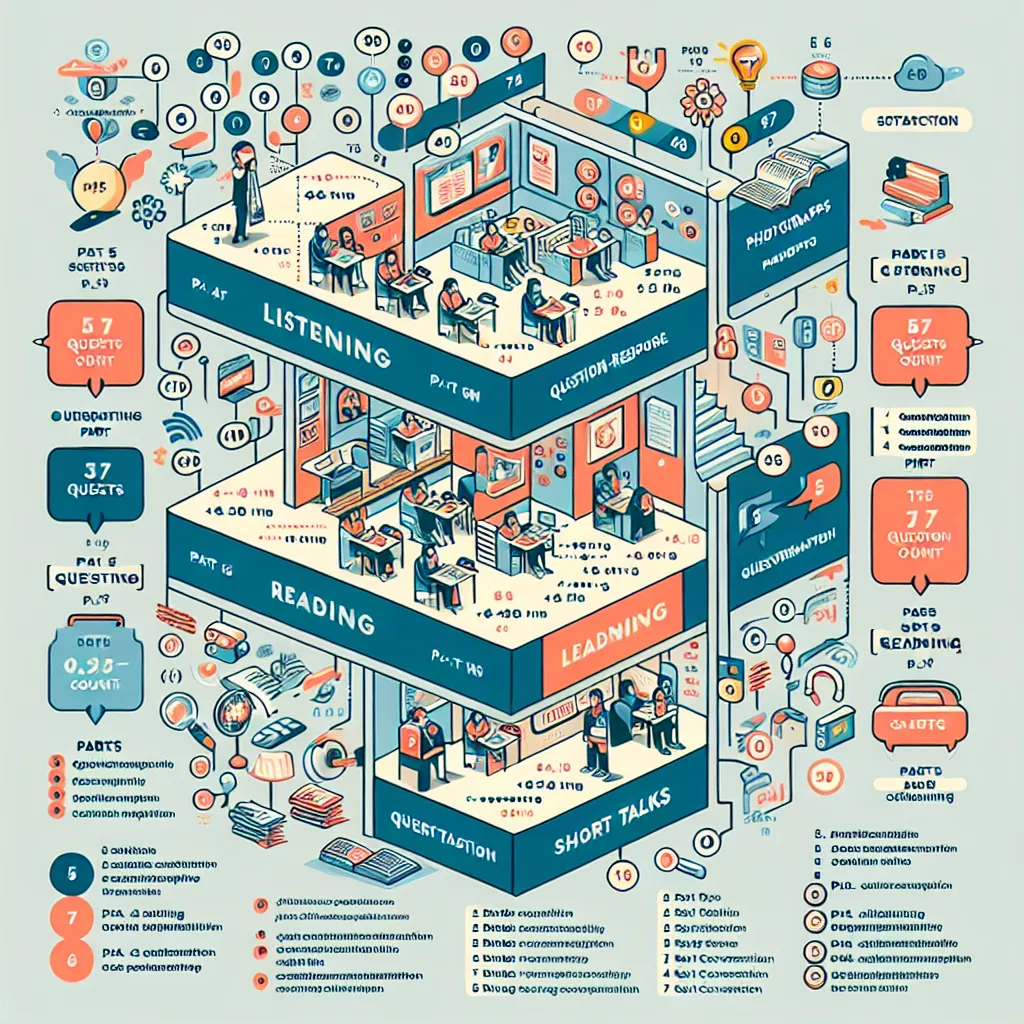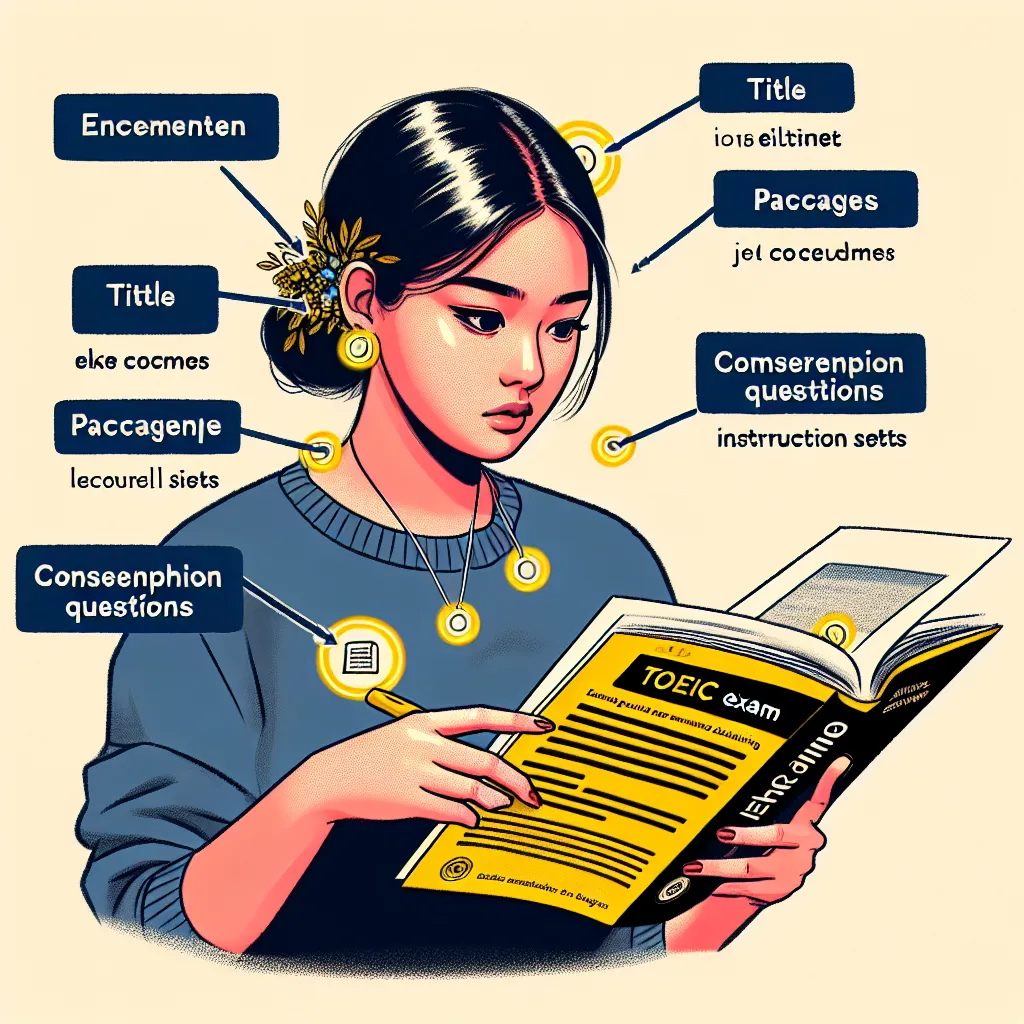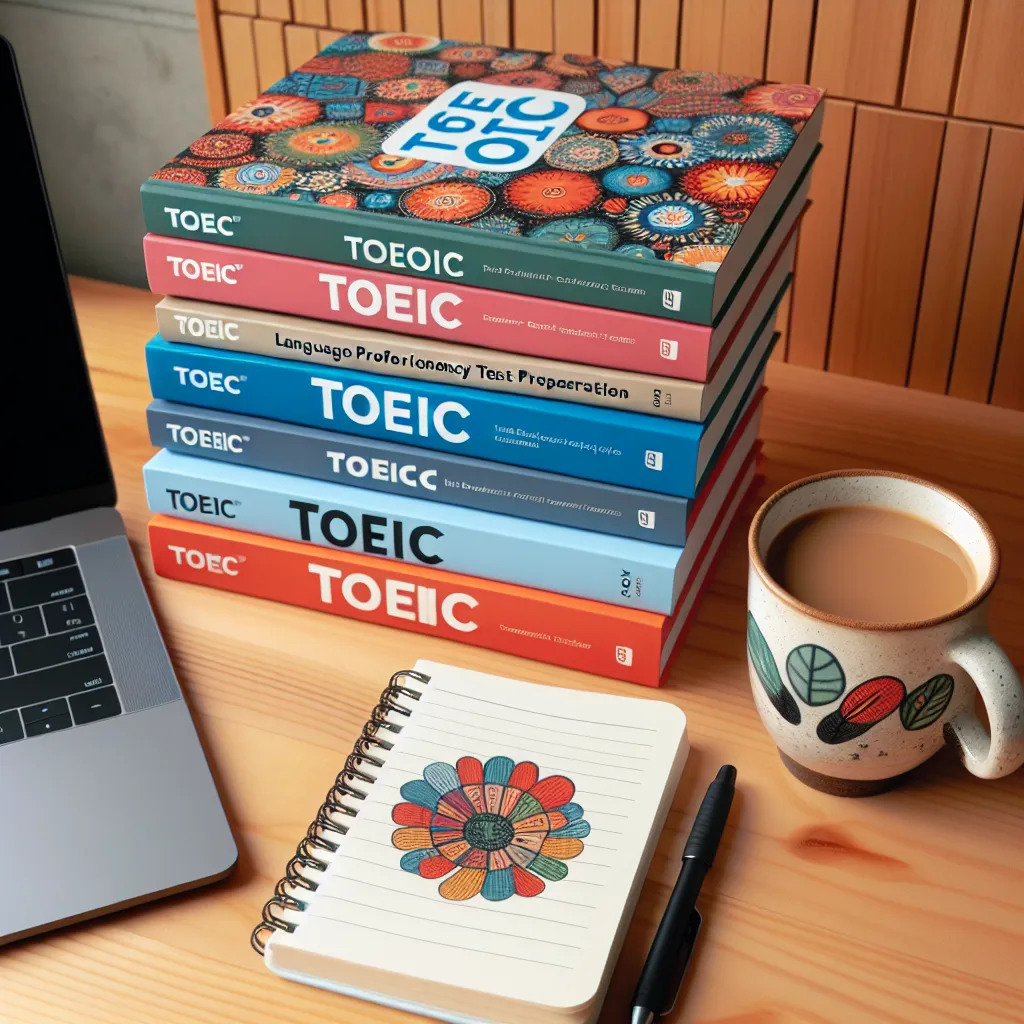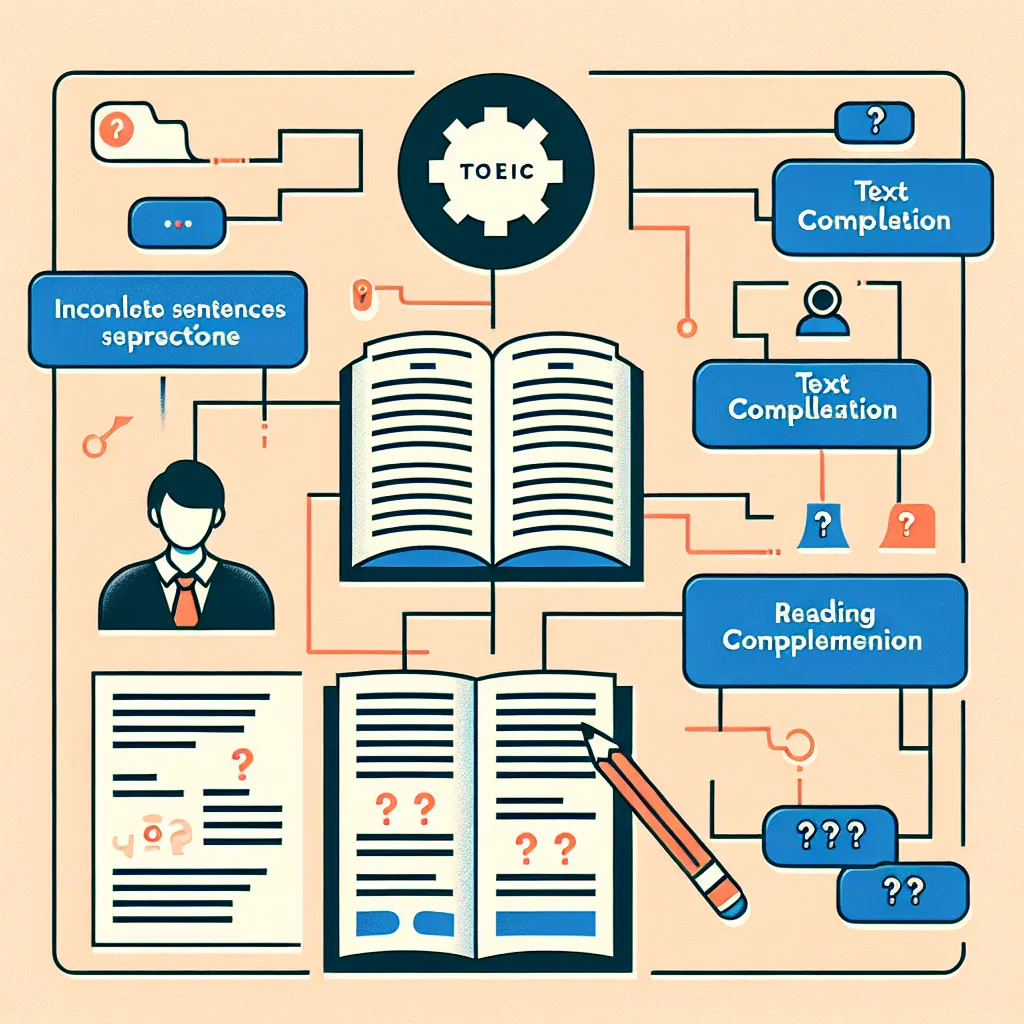The Test of English for International Communication (TOEIC) is a widely recognized English proficiency exam designed to assess the everyday English skills of people working in an international environment. Understanding the common question types in the TOEIC exam is crucial for effective preparation and achieving a high score. This comprehensive guide will explore the various question formats you’ll encounter in both the Listening and Reading sections of the TOEIC test.
Overview of TOEIC Exam Structure
Before delving into specific question types, it’s essential to understand the overall structure of the TOEIC exam:
-
Listening Section (45 minutes)
- 100 questions
- Four parts
-
Reading Section (75 minutes)
- 100 questions
- Three parts
 TOEIC Exam Structure
TOEIC Exam Structure
Listening Section Question Types
The Listening section of the TOEIC exam consists of four parts, each targeting different aspects of listening comprehension. Let’s explore each part and its question types:
Part 1: Photographs (6 questions)
In this part, you’ll hear a short description and must choose the picture that best matches the description.
Question type: Multiple choice with four picture options
Example:
You hear: “The man is typing on his laptop while sitting on a bench in the park.”
You see: Four different photographs, and you must select the one that matches the description.
Part 2: Question-Response (25 questions)
You’ll hear a question or statement followed by three possible responses. Your task is to choose the most appropriate response.
Question type: Multiple choice with three audio options
Example:
You hear: “Where did you park your car?”
Options:
A. “I’m leaving now.”
B. “In the underground garage.”
C. “It’s a red sedan.”
The correct answer is B, as it directly answers the question about the parking location.
Part 3: Conversations (39 questions)
This part features short conversations between two people, followed by three questions about each conversation.
Question type: Multiple choice with four written options for each question
Example:
You hear a conversation between two colleagues discussing a project deadline. Questions might include:
- What is the main topic of the conversation?
- When is the project due?
- What does the woman suggest they do?
Part 4: Short Talks (30 questions)
You’ll listen to short monologues or announcements, followed by multiple questions about each talk.
Question type: Multiple choice with four written options for each question
Example:
You hear a brief announcement about a company’s new policy. Questions might cover:
- What is the main purpose of the announcement?
- When will the new policy take effect?
- Who does this policy apply to?
Reading Section Question Types
The Reading section of the TOEIC exam is divided into three parts, each focusing on different aspects of reading comprehension. Let’s examine the question types in each part:
Part 5: Incomplete Sentences (30 questions)
This part tests your grammar and vocabulary knowledge by presenting incomplete sentences that you must complete with the correct option.
Question type: Multiple choice with four written options
Example:
“The marketing team ____ the new product launch strategy last week.”
A. discuss
B. discussing
C. discussed
D. to discuss
The correct answer is C, “discussed,” as it forms a grammatically correct past tense sentence.
Part 6: Text Completion (16 questions)
You’ll encounter short passages with missing words or phrases. Your task is to choose the best option to complete each blank.
Question type: Multiple choice with four written options for each blank
Example:
“The company’s annual report ____ a significant increase in revenue, ____ to the successful implementation of new marketing strategies.”
- A. showed B. displaying C. exhibited D. demonstrated
- A. owing B. due C. because D. as a result
The correct answers are A for the first blank and B for the second, forming a coherent sentence.
 TOEIC Reading Section
TOEIC Reading Section
Part 7: Reading Comprehension (54 questions)
This final part consists of single passages and sets of related documents, followed by multiple questions about their content.
Question type: Multiple choice with four written options for each question
Example:
You might read an email exchange between colleagues, followed by questions such as:
- What is the main purpose of this email thread?
- What does the manager suggest as a solution?
- When is the team expected to implement the changes?
Tips for Tackling TOEIC Question Types
-
Practice time management: Each section has a time limit, so it’s crucial to pace yourself and allocate time wisely for each question type.
-
Familiarize yourself with instructions: Understanding the directions for each part beforehand saves valuable time during the actual test.
-
Develop specific strategies: Each question type requires a different approach. For example, in the Listening section, try to anticipate possible questions while listening.
-
Improve your vocabulary: Many question types, especially in the Reading section, rely heavily on a strong vocabulary. Regular study of TOEIC-specific word lists can be beneficial.
-
Practice with authentic materials: Use official TOEIC practice tests and materials to get accustomed to the format and difficulty level of real exam questions.
-
Focus on context: In parts like Text Completion and Reading Comprehension, understanding the overall context is often key to selecting the correct answer.
-
Don’t leave any questions unanswered: There’s no penalty for incorrect answers, so make an educated guess if you’re unsure.
Conclusion
Understanding the common question types in the TOEIC exam is a crucial step in your preparation journey. By familiarizing yourself with these formats and practicing regularly, you’ll be better equipped to tackle the challenges of both the Listening and Reading sections. Remember, success in the TOEIC exam comes not just from English proficiency, but also from test-taking strategy and familiarity with the exam structure.
As you continue your TOEIC preparation, consider exploring our other resources on effective study techniques, time management during the exam, and strategies for each specific question type. With dedicated practice and the right approach, you’ll be well on your way to achieving your desired TOEIC score.
[internal_links]




